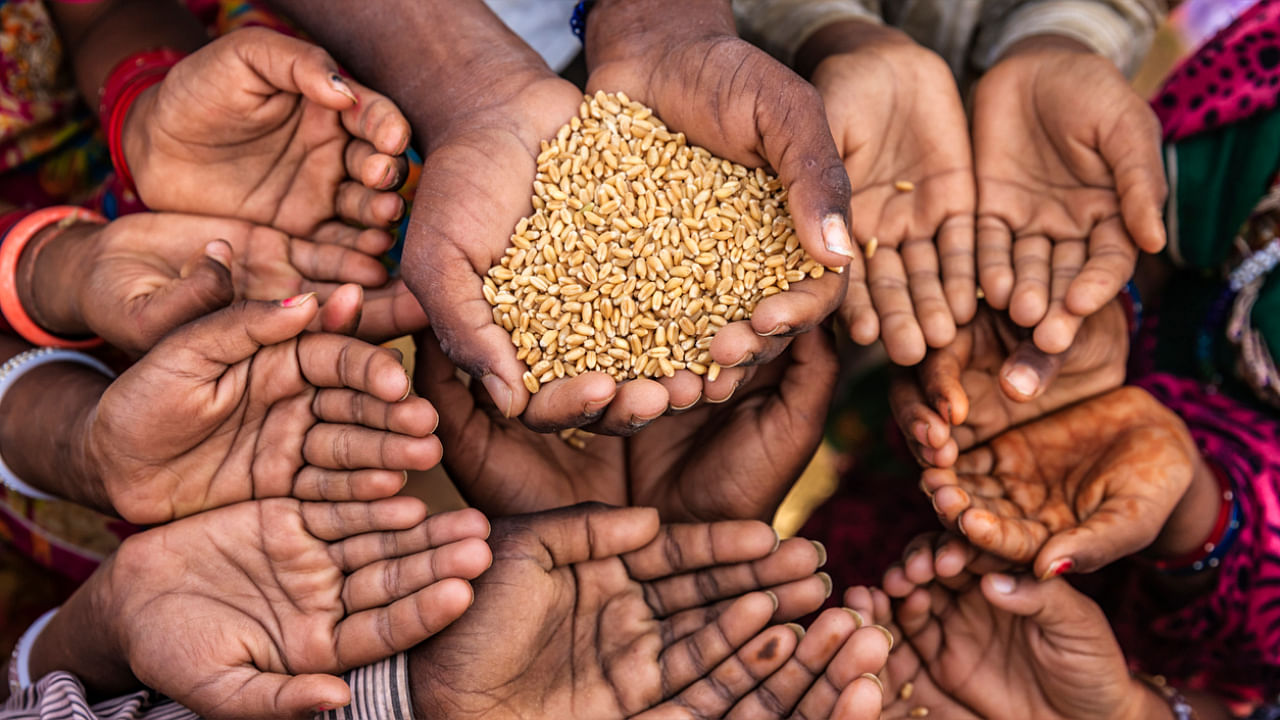
While envisaging Sustainable Development Goals (SDG), one of the main targets was to achieve ‘zero hunger’ by 2030. The Food and Agriculture Organisation (FAO) has released “State of Food Security and Nutrition in the World” report for 2020. It categorically states that the world is not in a position to meet the ‘zero hunger’ target.
The prolonged pandemic raging in different parts of the world has had a negative impact on the supply of healthy food, adding some 83 million to 132 million people to the already high number of chronically hungry and the total number of malnourished people in the world. The existence and increasing burden of malnutrition in many forms is a challenge. Ironically, the report also notes that adult obesity is also on the rise in all regions.
These trends call for adopting healthy food systems that can provide food security, not just the recommended calories through starchy staples like rice and wheat, but nutritious food to maintain good health.
The FAO and WHO recommend daily consumption of a minimum of 400 grams per person per day of fruits and vegetables. However, they are five times more expensive than the diets that meet one’s energy needs. Obviously, only the rich and upper middle-income groups are able to afford these healthy diets. With the loss of livelihood opportunities due to the pandemic, more than three billion people are unable to afford healthy diets. The FAO estimates that in the global south, more than 57% of the population is not in a position to afford healthy diet.
India boasts of tropical climate that provides a favourable environment for the production of fruits and vegetables and we boast of overproduction of cereals. We are the biggest producer of milk in the world. Our traditional diet is hailed as one of the healthiest, providing nutrition.
Despite this, we have become the diabetic capital of the world, with 73 million people suffering from diabetes. We also have the highest number of obese people and the highest number of malnourished children in the world.
The reasons are well known as we consume low-quality carbohydrates sourced from white rice, sugar and bread loaded with starch. Indians consume, on an average, 15 spoons of sugar, against the WHO recommended five spoons per person per day! The vegetable oils used in Indian cooking— sunflower, palm oil, and canola and soybean oil — become toxic when heated and are not healthy.
About 84% of people in our country are protein-deficient, according to the Indian Dietetic Association.
National Family Health Survey 4 (2015-16) revealed that about 54% of women do not consume fruits, eggs or dark leafy vegetables on a daily basis. Most shocking is the hidden gender bias and cultural prejudices among the Indian population, due to which women are not able to eat healthy food. Thus, we face the double burden of inefficient diets with additional dose of cultural taboos that lead to anaemic condition among women and children.
With rising incomes, food habits are changing drastically, having an impact on health, especially increasing the rates of non-communicable or lifestyle diseases like obesity and diabetes.
A study conducted around Pune showed that both children and adults were snacking more frequently, as they consumed cheap snacks with high sugar, salt and low-quality fat. It concluded that “unhealthy and cheap snack foods are crowding out healthier foods, including pulses, coarse grains and vegetables. More than 50% of the adults in urban areas, and 29% of women in rural areas, were obese.”
The report calls for addressing the food system to transform healthy diets to improve the nutrition status of socially disadvantaged groups like women and other disempowered groups. Our policymakers target these groups by providing food supply through PDS, but the need of the hour is to change consumer behaviour that leads to addiction of highly processed foods that have negative impacts on the health and nutrition status of children and the marginalised communities.
We are already into the second year of the pandemic, but there is no inclination from the government or policymakers to evolve a practical strategy to build a healthy food system as part of economic resilience in the post-Covid scenario.
Using the existing model of NREGS (National Rural Employment Guarantee Scheme), the scope can be widened to support people with rightful employment to produce food and vegetables. As these are short-duration crops, it can enhance nutritional security in the times of economic slowdown caused by the pandemic. It also provides a road map for greening the economy with minimal capital and maximum ripple effect of providing meaningful employment. Establishing a healthy food system is the best way to boost the immunity of common people in times of a pandemic.
It is high time that this initiative should be launched by the state government, supported by the central government, as a step towards food and nutritional security.
(The writer is a well-known environmental activist)